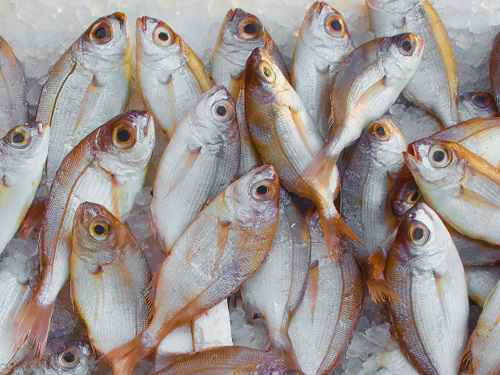PRODUCTION TOWER Feed Mills
PRODUCTION TOWER in Feed Mills is very important to understand because it is the base of feed mill, feed mills cannot work without production. Nutrition is one of the vast field, VeterinaryDiscussions provides you an opportunity yo get information about nutrition either poultry or ruminants.
Hello Everyone, I am Dr. Kashif Amin and today we will discuss about Production Towers feed mills. so lets begin;
What is Production Tower Feed mills?
Production Tower of feed mills like poultry and ruminants is a place where ingredients received, grinned, batched mixed, pelleting and packing of material is done.
What is Feed mill?
Feed mill is a place where ingredients like corn, sorghum, millet, wheat, rice are stored for short time and used them in feed manufacturing for poultry and ruminants during off season of ingredients.
Where ingredients are stored in Feed Mills?
Ingredient storage is very important in feed mills. storage place is different for different ingredients. there are two types of ingredients,
- Live Ingredients
- Processed Ingredients
Live Ingredients:
Those ingredient which germinate under suitable temperature and environment. All grains are live ingredients like Corn, millet, wheat, rice etc. These are stored in silos of feed mills not in go-downs.
Processed Ingredients:
Those ingredients which are either chemically processed or mechanically, There is no chance of germination in these ingredients. these include Soybean meal, canola meal, sunflower meal, rice polish, all vitamins, all minerals, fish meal, poultry byproduct meal, limestone etc.
PRODUCTION TOWER Feed Mills
Production is done with the help of following departments:
- Production Department
- Mechanical Department
- Electrical Department
- Boiler Department
- Houdi Department
- Medicine store Department
- Packing Department
Flow Diagram of Production Tower:

Complete Information PRODUCTION TOWER Feed Mills
Feed mill is a fully automatic and modern plant, Batching in the mill is automatic or manual and mill has either Pre grinding or post grinding system.
Control Room
Control room is located on 1st floor just in front of Pellet mill. The PLC is adjusted on 2 large screens and a separated small screen for liquid addition. PLC stand for (Programmable Logistic/Logic Control). PLC is used to control all feed processing operations in the mill. Supervisor operates PLC under the instructions of Mill Manager. The PLC has three options to operate feed mill machinery and processing.
- Automatic
- Semi-automatic
- Manual
The formulated formula of feed is inserted into PLC and click on save. Different colors are indicators of PLC.
Sections in Production Tower:
Feed Mills have five major sections with respect to processing.
- Receiving
- Batching
- Grinding
- Mixing
- Pelleting
Receiving
The raw materials are received in dosing bins which are located in main production tower. There are different number of dosing bins and every bin might be of same capacity or different.
The materials comes from go-downs through conveyors located underground and load material to elevator which further load material to drum cleaner and from here material is given to another elevator which transfer material to dosing bins through chain conveyor. Same process is used for grains that come from silos.
Batching
The formula is inserted into PLC to start batching automatically. When the formula is inserted in PLC the selected ingredients are shifted from dosing bins to scale hopper, one by one. When all the materials are weighed, they automatically shifted to hopper which is located under the batching scale. From here material is transferred to chain conveyors which gives material to batching elevator having different capacity. Batching elevator gives material to hammers mill hopper. feed mill have different number of batching scales either 1 or more, the capacity of batching scale is 3 tons or 5 tons.
Ingredient screening
Batching elevator load all ingredients to ingredient screener from where powdery material is by passed and large size material is sent to hammer mill for particle size reduction.
Grinding
Grinding means crushing of ingredients. Only large particle size is sent to hammer mill for grinding and reminder is bypassed through a bypass shoot directly into the mixing hopper. There are different number of hammer mills in every feed mil having different capacities most used capacity of 20 ton/hour. Each hammer mill has a rotor which has 72 blades for grinding. The blades are changed after 20 days. The feeder of hammer mill has a magnet for capturing of metal particles.
Premix hoppers
From here premixes are added manually. The gate of hopper opens automatically when a batch is dropped in it, premix is added and gate is closed after that load is dropped in mixer hoppers for mixing.
Horizontal Mixer
It is located on ground floor. Grinned material passes into hoppers of Horizontal mixer from premixes hoppers. The maximum time for mixing is 210 seconds. From mixer, a conveyor transports the mixed material to mixing elevator which has capacity of 120 ton/hour. This elevator elevates the material to pellet bins. Different feed mills have different mixer with mixing capacity of 5 ton.
Mixing cycle
- Filling time: 15 second
- Mixing time: 3.5 minutes
- Emptying time: 15 second
- Total mixing cycle is of 5 minutes.
Surge Hopper, Pellet bins.
Pellet Mill
Pellet mill is located on first floor just in front of control room. The material after batching is transferred in the pellet bins. Pellet mills are of different capacities, it depends on demand of feed in industry how much feed is Manufactured.

Complete Information PRODUCTION TOWER Feed Mills
Pellet mill have following parts;
- Feeder
- Conditioner I
- Conditioner II
- Gear box (90 liter oil)
- Roll Shells
- Pelleting machine/ Die
- Motor (335 HP)
- Safety Pins
- Base
- Pellet operating unit
Feeder
Feeder is a long rectangular tube that contain worm conveyor attached to the motor. It receives the mash feed from the pellet bin or hopper and supplies to the conditioner that is installed below to the feeder. The speed can be increased or decreased according to the situation. Speed of the feeder is adjusted according to the load taken by the pellet motors. The capacity of the pellet machine is 20 tons/hour. If the speed of the feeder is reduced, it means that less feed is being given to the conditioner, so, the production of the pellets from pellet machine will be less. It will produce less than 20 tons/hour. In some formulations feeder speed is kept low because they contain more fiber. Motors consume more power to press them through die.
Conditioner I
Steam is applied here with 2.5 bar pressure to gelatinize starches, lubrication & for more production. The temperature is greatly varying form 75-85oC.
Conditioner II
It has 2 barrels. Both these barrels move in opposite direction and properly mix the material. Temperature varies from 80-85oC. Conditioner 2 is given with different steam nozzles from where stem may be added if required according to situation.
Roll shells
Roll shells are installed to the internal side of the die. These are installed on bearing. There are two roll shells that are so adjusted on the inner side of the die that when die rotate, they also rotate. Everything that will come in between the shells and die, shells will press them through die making their shape like capsule having diameter of 4.5 mm. Roll shells have grooves on their surface. The grooves damages with the time. As the grooves damages, the shells are adjusted again so that the shells attaches with the die. Shells are installed on the central shaft that does not rotate. Die revolves around the shells. The central shaft is restricted from the rotation with the help of safety pin on the back end of the pellet machine.If, some hard thing like iron piece comes in between the roll shells and die, it will produce hindrance and roll shells will not rotate and when the force will apply on the central shaft, safety pin will break and the central shaft along with along with roll shells start to rotate. Safety pin breakage protects the machine from big damage. Roll shell are greased after every 4 hours at the rate of 80gm/hour.
Pelleting Die
Material falls into pellet mill inside the die. Roll shells compress the falling feed material on die. Due to compressing of these roll shells, material passes with pressure from die. The 2 cutters are adjusted to cut pellets into desired size of pellets. The material passes through Pelleting die are cut at desired length by these cutters. In this way, Pelleting die converts the gelatinized materials into pellets. These pellets fall into Pelleting cooler. Die hole size is 4.5 mm. Die is changed after production of 300,000 bags and roll shells are usually changed after 150,000 bags. If the hole size of die is less production will be low and quality will be high and vice versa.
By-pass gate
This is the small window that is installed on the gate of the die. When feed is over in the die, feed comes out through this window. This is also called over flow window. This operates manually. When somehow the feed in the conditioner is not mixed with the steam, this feed is over flowed.
Pelleting Cooler
Pelleted feed immediately falls into counter-flow type cooler for cooling and drying. The added moisture is removed here. Cyclone sucks air and hence moisture is also removed. On average bases, feed stays in cooler for about 1 minute only. A position of a device named as “Low Level” determines the time of feed in cooler.
Cyclone
Cyclone is a round cone shape structured that is attached with the blower fan. Blower fan from the other side, attached with the cooler. Blower fan sucks the air from the cooler and send to the cyclone. Fan also takes some powder feed from the cooler with the air and send to the cyclone. The powder in the air falls down to the bottom of the cyclone, when air rotates in the cyclone. There is an air lock installed on the bottom of cyclone, The hot air exits from the cyclone through a pipe on the top of cyclone that opens on the top floor of the tower.
Crumbler
- Pelleted feed after cooling must passes through Crumbler.
- The size of crumbs is adjusted manually by increasing or decreasing gap between rolls.
- If there is no need to crush pellets, then gap between 2 rolls is sufficiently increased.
Sifter / Screeners
- Sifter separates pellets according to size.
- The oversize pellets are sent back for crumbling into the cooler and powder is transferred to pellet bins for reprocessing.
Packing hopper
It has auto weighing system. It accurately weigh 50 or 70 kg feed and drop it into packing bag. It pack 15 bags in one minute, it can be more depend on demand.
Sewing machine
After filling bag is conveyed to swing machine with the help of belt conveyor. It sewing’s 15 bag in one minute, it can be more depend on demand.
Visit our new our website Veterinary discussions
For more information contact us






